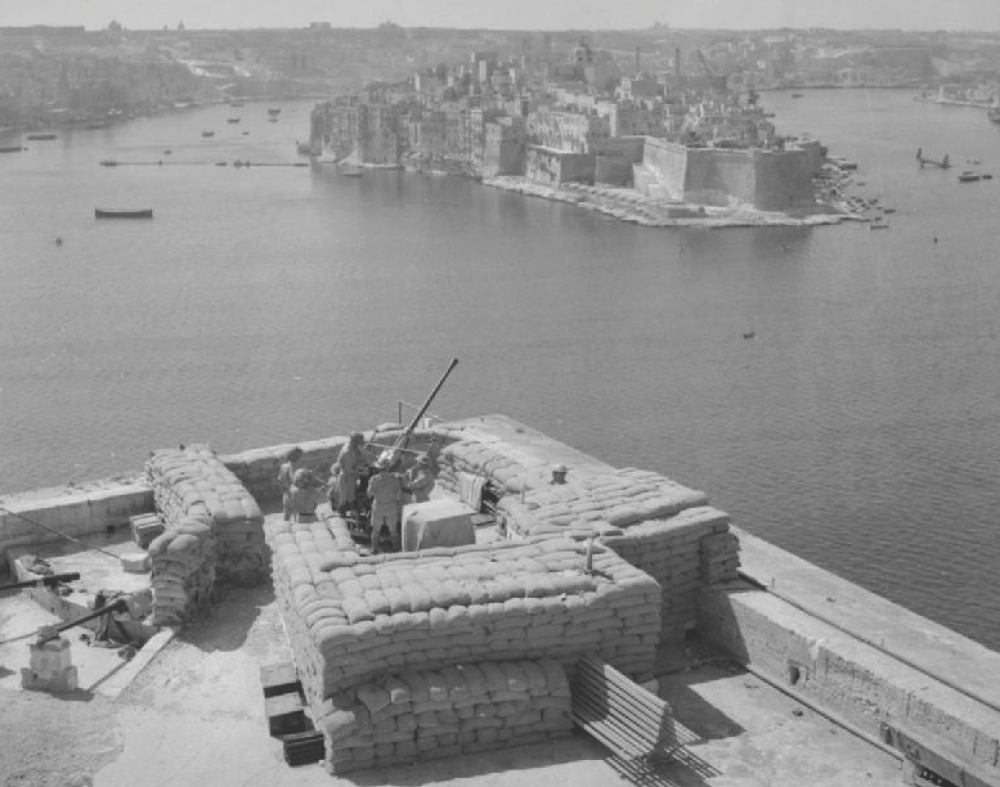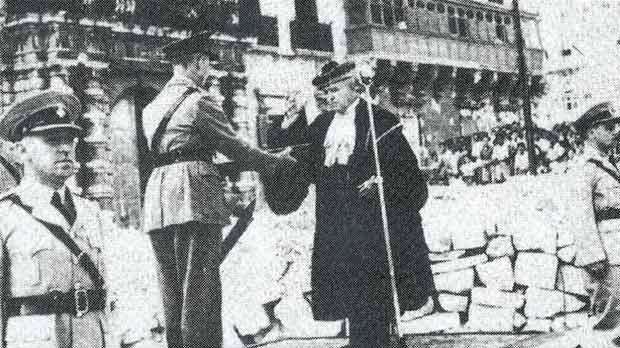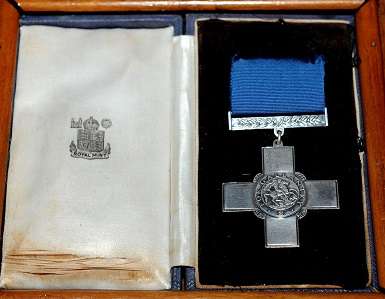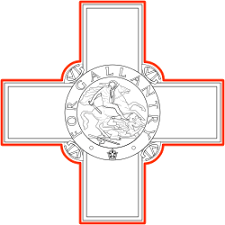Table of Contents
ToggleThe George Cross
A Symbol of Courage and Resilience
On 15 April 1942, in the middle of one of the darkest chapters of World War II, King George VI awarded the George Cross to the island of Malta. It was not given to an individual but to the entire population of the islands — a unique and unprecedented act that recognized the extraordinary heroism and endurance of the Maltese people under relentless siege. Today, the George Cross remains one of Malta’s most powerful symbols of national pride, woven into its history, culture, and even its flag.
Malta’s Strategic Position in World War II
Malta, a small archipelago in the central Mediterranean, had long been seen as a strategic stronghold. During World War II, its importance grew immensely: it served as a vital base for Allied operations, cutting supply lines between Axis forces in Italy and North Africa.
The islands, however, paid a heavy price for this strategic role. Between 1940 and 1942, Malta became the most bombed place on Earth. The Luftwaffe and the Italian Regia Aeronautica conducted near-daily raids, sometimes up to seven in a single day. The Maltese people endured destruction of homes, schools, hospitals, and churches. Food and fuel became scarce, and famine loomed as supply convoys faced constant attack.
Despite these hardships, the population showed remarkable resilience. Ordinary civilians, alongside military personnel, maintained morale and contributed tirelessly to the war effort. Their defiance, even under starvation and devastation, captured global attention.

The Awarding of the George Cross
On 15 April 1942, King George VI sent a letter to the Governor of Malta, Sir William Dobbie, stating:
“To honor her brave people, I award the George Cross to the island fortress of Malta to bear witness to a heroism and devotion that will long be famous in history.”
This award marked the first and only time the George Cross — Britain’s highest civilian decoration for gallantry — was bestowed upon a collective people. It was also deeply symbolic. While medals normally recognized acts of individual bravery, in this case the award acknowledged the shared sacrifice of a whole nation.
The George Cross became a badge of honor, proof that the small Mediterranean islands had stood firm against overwhelming odds. It gave hope not only to the Maltese but also to the wider Allied cause.

The Significance of the George Cross for Malta
The George Cross changed Malta’s story forever. It was not just recognition of endurance during the siege; it became part of the country’s identity. In 1943, only a year after receiving the award, Malta played a crucial role in the Allied invasion of Sicily, marking the beginning of the end for Axis powers in the Mediterranean.
After the war, the medal was enshrined in Malta’s sense of nationhood. In 1964, when Malta gained independence from Britain, the George Cross remained a reminder of its wartime courage. Just four years later, in 1968, the cross was officially incorporated into Malta’s national flag — white and red with the George Cross in the upper hoist corner.

Every Maltese citizen, therefore, carries the symbol of this collective bravery as part of their national identity.
Life Under Siege: Stories of Survival
To understand the weight of the George Cross, one must imagine life in Malta during the siege. Families lived for months in underground shelters carved into limestone rock, sometimes going days without proper meals. Children were educated in makeshift classrooms, often interrupted by air raid sirens. Farmers and fishermen risked their lives to provide food, while dockyard workers toiled endlessly to repair damaged ships and aircraft.
The population’s resilience was also spiritual. Religious faith played a central role, with people often gathering in churches even as bombs fell. The patron saint of Malta, St. Paul, was invoked in prayers, and religious processions continued despite the dangers.
What shines through these stories is the collective spirit of endurance. The George Cross was not awarded for isolated acts of valor but for the shared bravery of an entire people.

The George Cross in Modern Malta
Today, the George Cross remains a living part of Maltese heritage. The original medal and King George VI’s handwritten citation are displayed in the National War Museum at Fort St. Elmo in Valletta. Visiting the museum offers a moving reminder of Malta’s wartime sacrifice and its enduring pride.
The annual remembrance ceremonies also keep the memory alive. Each year on April 15, the award’s anniversary is marked with tributes to those who lived through the siege and to those who gave their lives.
The George Cross also resonates beyond history books. It influences Maltese art, literature, and even tourism. Visitors often arrive with a curiosity about Malta’s wartime past, and monuments across the islands — from bombed churches left in ruins to the Lascaris War Rooms — help tell the story of endurance.
The Lasting Legacy
The awarding of the George Cross to Malta is more than a historical footnote; it is a lesson in resilience, solidarity, and collective courage. For two long years, Malta withstood a relentless storm of bombs, shortages, and suffering. Instead of succumbing, its people became a beacon of resistance and fortitude.
In a world where nations often remember wars through battles and generals, Malta’s George Cross stands out as a recognition of civilian bravery. It reminds us that history is not only shaped by soldiers but also by the courage of ordinary men, women, and children who refuse to give in to despair.
Even today, when Maltese people look at their flag, they see not just a national emblem but a symbol of shared sacrifice. The George Cross is a permanent reminder that even the smallest nation can make the biggest difference.



